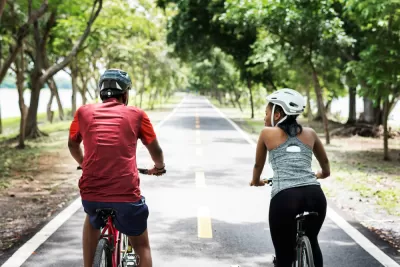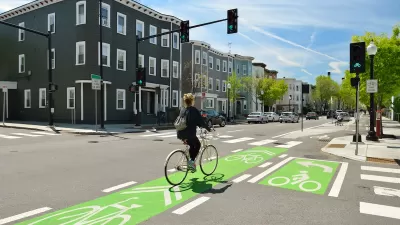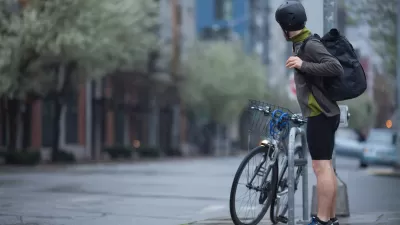A far-reaching new study highlights the disproportionate effect of biking and walking laws on the mobility of Black Americans.

An extensive new analysis of laws that impact vulnerable road users identifies “policies that evidence shows are being enforced in a racially discriminatory manner, or that have strong potential to be enforced in a racially discriminatory manner.” As Kea Wilson explains in Streetsblog, the research team, led by Charles T. Brown, used interviews in addition to the legal data to understand how the mobility of Black Americans is limited by discriminatory laws.
“Throughout the report, Brown and his colleagues cite a massive body of research that shows Black road users throughout the U.S. are significantly more likely than White road users to be policed for mobility-related infractions, to face violence and death at the hands of law enforcement when they’re stopped, and to live in communities that rely on fines and fees to support their municipal budgets, even though Black residents disproportionately struggle to pay them.” Furthermore, stops made under the pretense of safety—jaywalking, helmet laws, sidewalk bike riding laws—actually endanger pedestrians and people on bikes by forcing them onto unsafe infrastructure.
The report makes a few recommendations, such as supporting “dedicated infrastructure for vulnerable road users, not just as a tool to end traffic violence but a tool to prevent criminalized behavior like sidewalk riding and jaywalking and reduce the need for human enforcement” and encouraging bike manufacturers to include more safety equipment as built-in features. “The researchers’ final recommendation, though, may be the most important of all: that transportation leaders to analyze and address all the structural reasons why Black people experience arrested mobility anywhere they move.”
FULL STORY: How Bike/Walk Laws ‘Arrest’ the Mobility of Black Americans

Study: Maui’s Plan to Convert Vacation Rentals to Long-Term Housing Could Cause Nearly $1 Billion Economic Loss
The plan would reduce visitor accommodation by 25,% resulting in 1,900 jobs lost.

North Texas Transit Leaders Tout Benefits of TOD for Growing Region
At a summit focused on transit-oriented development, policymakers discussed how North Texas’ expanded light rail system can serve as a tool for economic growth.

Using Old Oil and Gas Wells for Green Energy Storage
Penn State researchers have found that repurposing abandoned oil and gas wells for geothermal-assisted compressed-air energy storage can boost efficiency, reduce environmental risks, and support clean energy and job transitions.

Santa Barbara Could Build Housing on County Land
County supervisors moved forward a proposal to build workforce housing on two county-owned parcels.

San Mateo Formally Opposes Freeway Project
The city council will send a letter to Caltrans urging the agency to reconsider a plan to expand the 101 through the city of San Mateo.

A Bronx Community Fights to Have its Voice Heard
After organizing and giving input for decades, the community around the Kingsbridge Armory might actually see it redeveloped — and they want to continue to have a say in how it goes.
Urban Design for Planners 1: Software Tools
This six-course series explores essential urban design concepts using open source software and equips planners with the tools they need to participate fully in the urban design process.
Planning for Universal Design
Learn the tools for implementing Universal Design in planning regulations.
Borough of Carlisle
Caltrans
Heyer Gruel & Associates PA
Institute for Housing and Urban Development Studies (IHS)
City of Grandview
Harvard GSD Executive Education
Toledo-Lucas County Plan Commissions
Salt Lake City
NYU Wagner Graduate School of Public Service





























